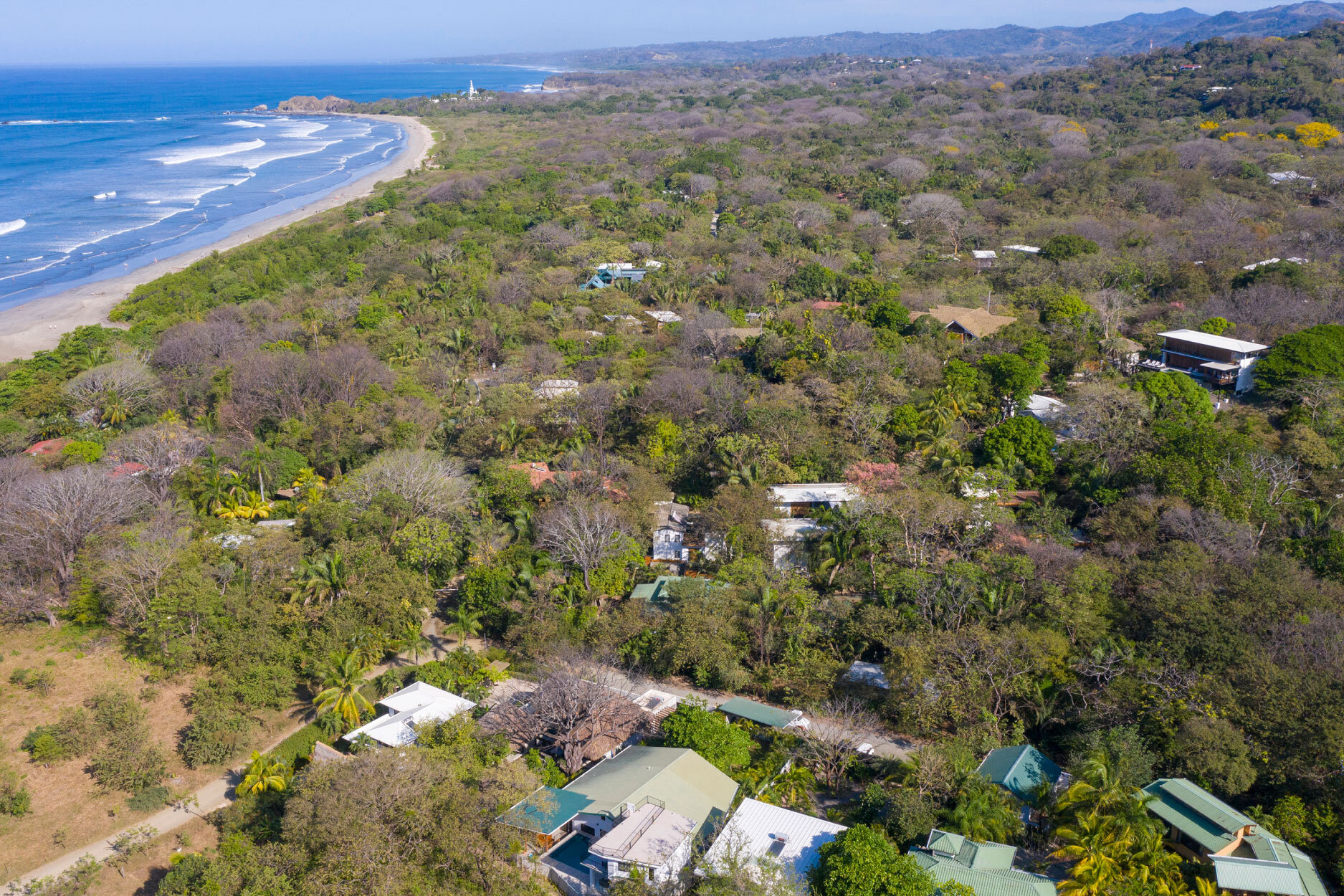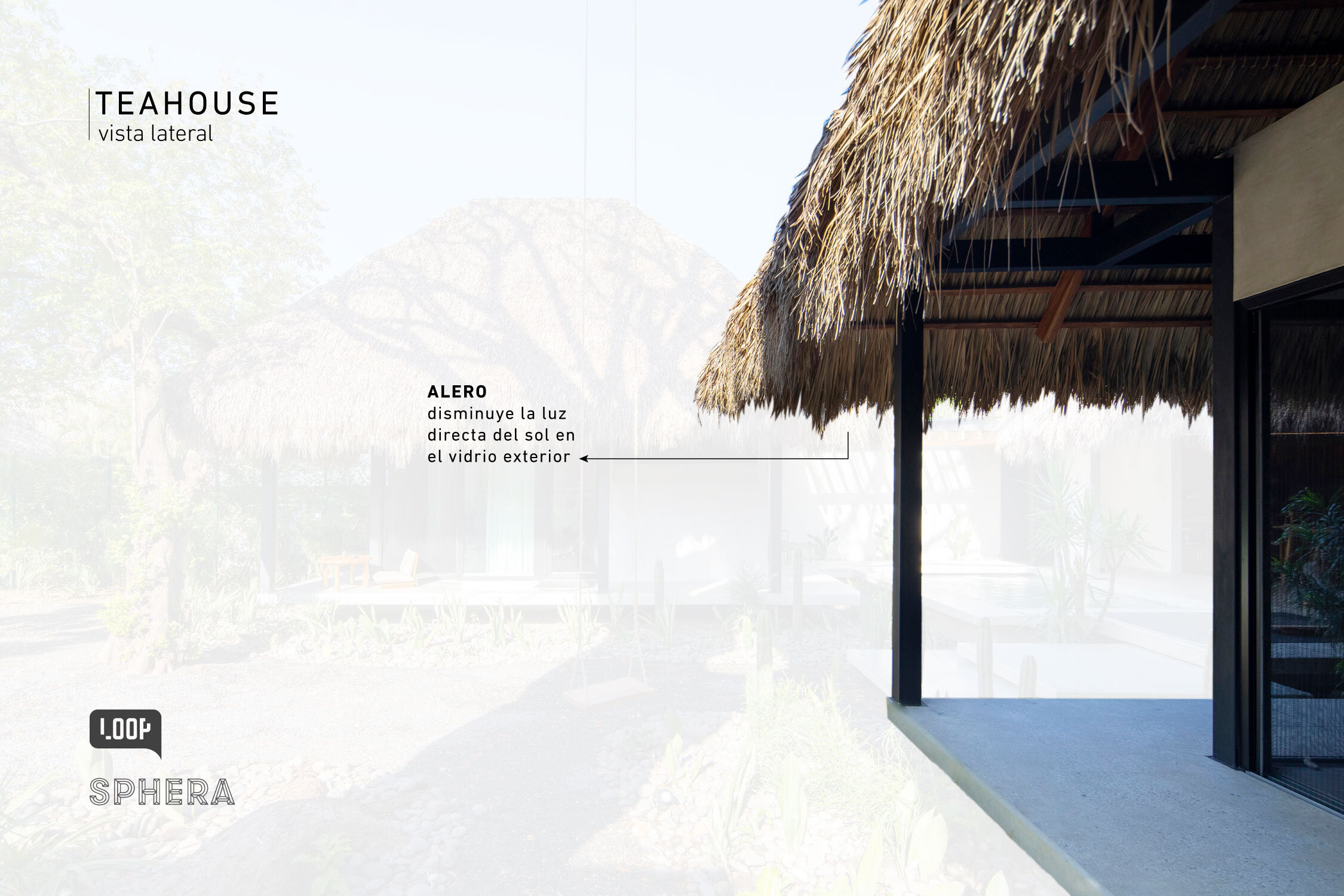Best practices: Integrated Conservation in Nosara
What are the regulations?
Within the rich biodiversity in Costa Rica there is the Ostional Refuge, an area that protects two important ecosystems in the country: the marine-coastal and the terrestrial ecosystems. This area was declared a refuge, and alongside these conservation efforts, the Refuge General Management Plan recommended outlining specific regulations to further protect this buffer zone. The Nicoya Municipality welcomes these recommendations and approves regulation for constructions in the buffer zone, which stretches five kilometers from the outer limit of the Refuge towards the mainland and includes destinations such as Nosara, Ostional, Guiones, and Playa Pelada.
These regulations work as a foundation of requirements for new construction in the area, put in place with the intention to protect and promote marine turtle conservation, the natural ecosystems, as well as ensure the wellbeing of the present and future community in the area.
aerial view of Guiones by Andres Garcia Lachner
Progress includes both the people and the environment
And the way to achieve this progress is through development that is integral, sustainable, and collaborative.
The Building Regulations for the Buffer Zone of the Ostional National Wildlife Refuge was drafted by the Nicoya Municipality based on the recommendations established in the General Management Plan and in direct conversation with the community, the Nosara Civic Association, and development associations, with the intention of incorporating feedback. During this process, the municipality held 4 on site discussions in addition to setting up an office for consultatiosns. Based on these conversations, adjustments were made to the regulations in order to regulate growth in the area in a way that felt responsible.
¿What is happening with the regulations and development in Nosara?
The Contentious Administrative Court accepted a precautionary measure that suspended these regulations, and therefore, they can no longer be applied. This ruling, however, did not declare these regulations illegal, nor is this the end of the process; the court decided to put them on hold until a final resolution is issued.
There are no perfect regulations nor perfect instructions for sustainable construction, but we well know that perfection is the enemy of good: while the regulations are on pause, the movement and growth in Nosara is on the rise, and waiting for a regulatory plan will cause irreparable damage to the community and wildlife. We want growth that is rooted in the community and the environment.
#YoDefiendoOstional
In response to the hold on the regulations, we want to propose, take action, raise the bar; continue to use our voice for what is important to us.
There is a logic behind the requirements in the regulation that are based on sustainable principles developed with technical support from SINAC. We are committed to complying with these regulations in our projects and want to invite other projects, developers, construction companies and project owners to voluntarily follow these measures as well.
Graphic summary of the building regulations for the Ostional buffer zone
A guide to voluntarily comply with the regulation
There are five general categories within the regulations: the coverage, or area, of a built project, the height of the buildings, wastewater management, lighting, and preventing bird collision.
1. Coverage: The regulation limits the maximum coverage to 50% of the total area of the lot, meaning that the built structures should not cover more than half of the amount of land. This improves rainwater filtration in the ground to recharge aquifers, ensures enough space to install proper septic systems and promotes species connectivity, preventing wildlife from becoming isolated.
This regulation is an invitation to question the space being used for a project and reduce it in size - sometimes we think that we need more space than is actually necessary.
Case study: Teahouse
2. Height: When designing a new project, make sure that the height of the built structure does not exceed 9 meters in the direct impact zone and 12 meters in the indirect impact zone. The specificity of these heights were determined by the visibility of artificial lights from the beach so as to not affect the orientation of nesting turtles in the refuge.
3. Lighting: If a project is incorporating outdoor lighting it is important that these lights aren't directly visible from the beach in order to avoid light pollution, which affects the turtle nesting process as well as the dynamics of nocturnal species. In this case, downward-pointing lights and fixtures can be designed in order to prevent skyglow, which in turn improves your visibility of starry skies. Timers can be installed so that lights turn off after a certain time, as well as movement sensors so lights turn on when needed. This way they do not cause a continuous interruption.
4. Water: Proper wastewater management reduces the risk of contaminating the aquifers that supply drinking water to the Nosara community. It is important to include septic tanks with proper drainage and treatment plants into the planning and design of a project in order to to reuse treated water and avoid the use of potable drinking water for uses that do not require potability.
5. Preventing bird collisions: Incorporate systems that help prevent the collision of birds against windows and glass doors. Selecting glass with low reflectivity, using sunshades or incorporating adhesives are all helpful strategies to avoid bird collisions. On a design or structural level, incorporating wings can reduce the reflection on the glass. Planting directly in front of glass and ensuring that the windows have frames and are not continuous large panels also help prevent bird collisions.
Case study: Teahouse
Steps beyond the regulations
Best practice for every and any project is to ensure that the working team has the adequate insurance and proper conditions for the job.
Back to community: get to know your neighbors and develop projects based on this relationship
In summary
The idea behind the building regulations in Ostional is to ensure healthy and sustainable development for both wildlife and ecosystems as well as for the people that make up the community. Although these regulations are not legally enforced at this time, we are committed to complying with the regulations in our projects and want to invite other projects, developers, construction companies and project owners to voluntarily follow these measures as well. We outline a very simple guide of strategies to implement based on the established requirements for new constructions as outlined in the regulations.




